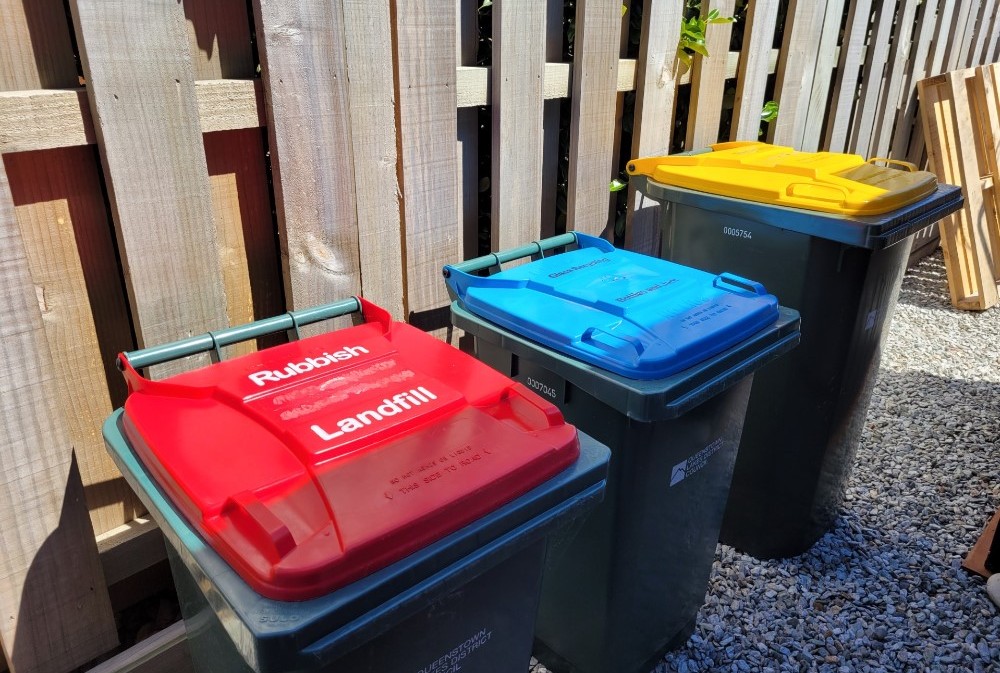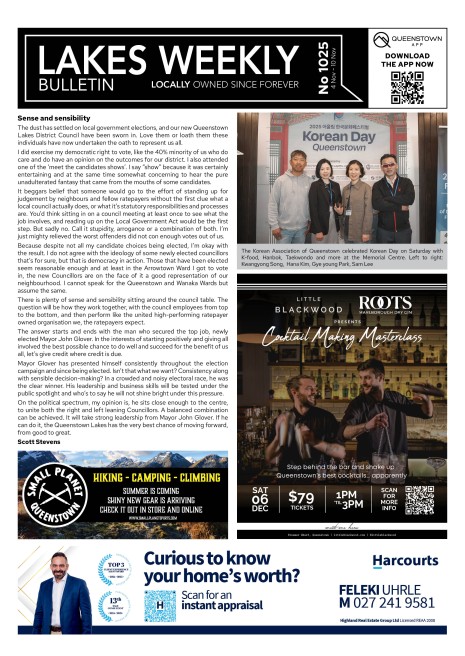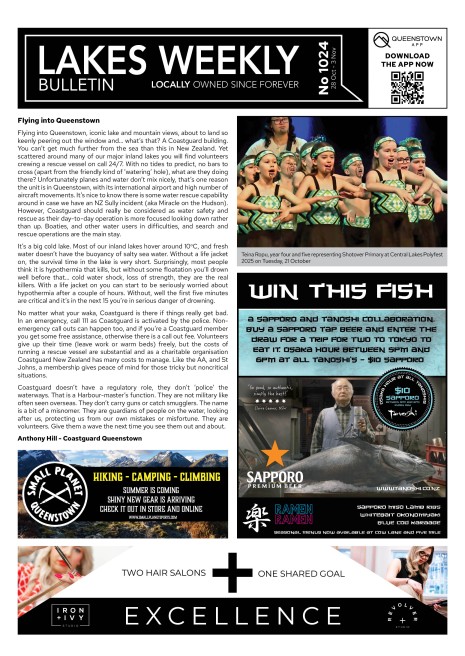Food scraps and green waste collection?

Queenstown Lakes District councillors are being asked to approve funding for a future kerbside organics collection service.
Analysis indicates that more than half of material in Queenstown's kerbside refuse bins is made up of food scraps and green-waste - which mostly heads to landfill.
The new 80-litre green bins would be funded through a targeted rate of on eligible properties of $83 per household per annum (including GST), and would likely be introduced in 2026.
The combined food scraps and green-waste would be transported to the organic waste processing facility being developed by Central Otago District Council.
A business case will be presented the councillors at the full council meeting tomorrow, when they'll also be asked to approve $17.65m more for the downtown bypass.
QLDC also faces a Three Waters funding blackhole, estimated to be somewhere between $130m-$430m over the next 10 years.
Council Property and Infrastructure GM Tony Avery says the proposed organic waste service is response to community feedback and policy issued by the Labour government last year.
It requires councils to implement a kerbside collection for food scraps to urban areas with populations greater than 1,000 before January 2030.
"The business case to be presented to Council this week followed a rigorous process looking at a wide range of organic collection service and processing facility options," Avery says.
“Implementing the new service will extend the life and capacity of the Victoria Flats landfill and means we can all contribute to reducing greenhouse gas emissions, particularly those who can’t easily compost at home,” Avery says.
The introduction of the service is expected to reduce household waste to landfill, reduce emissions generated from organic waste decomposition in landfill, improve soil quality through the application of compost applied to land, while reducing or avoiding refuse disposal costs, waste levy and Emissions Trading Scheme (ETS) costs.
The preferred option is aligned with the strategic goals and objectives in QLDC’s WMMP, Climate and Biodiversity Plan (CBP) and Te rautaki para NZ Waste Strategy.
If funding is approved, the kerbside organics collection service could commence once a Central Otago District Council regional facility is operational, currently anticipated in 2026-2027.
This would mean Council would meet proposed government mandate for food scrap collection by 2030 and performance standards for kerbside waste diversion, as well as fulfilling its commitments in the WMMP and CBP.
Alongside the proposed new service, Council would continue to support complementary action including food waste initiatives such as Love Food Hate Waste, Kiwi Harvest food rescue, and home and community composting programmes.









